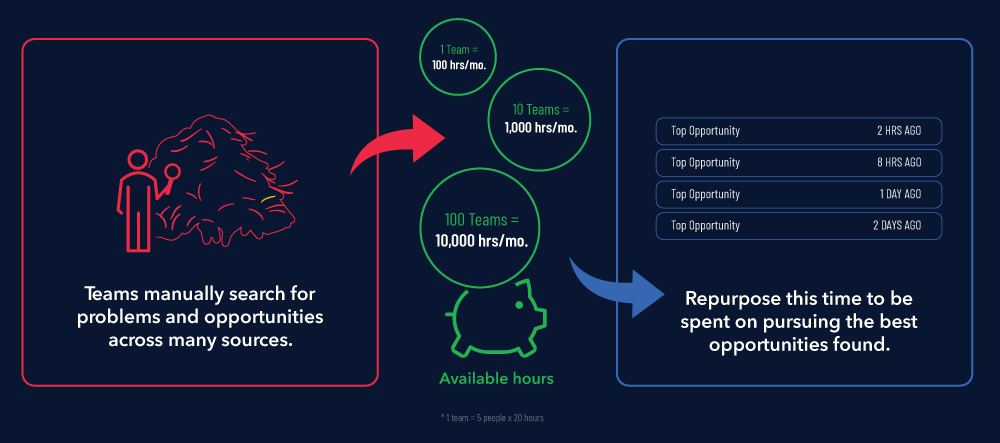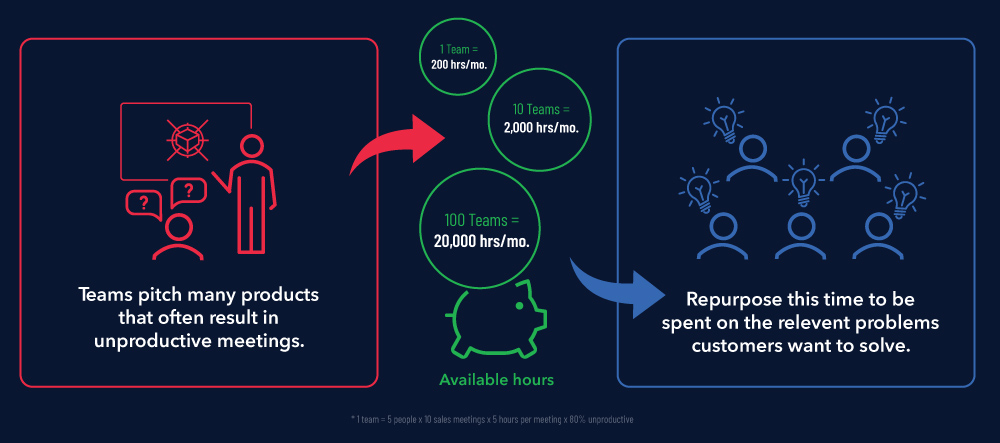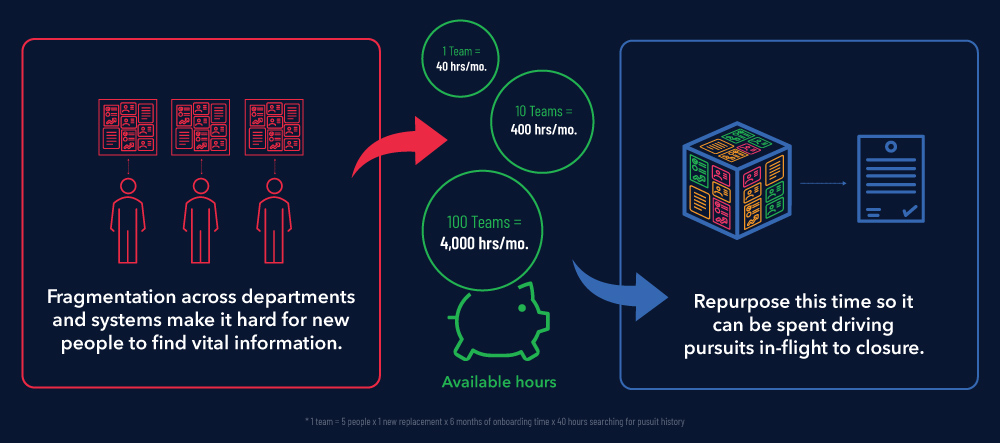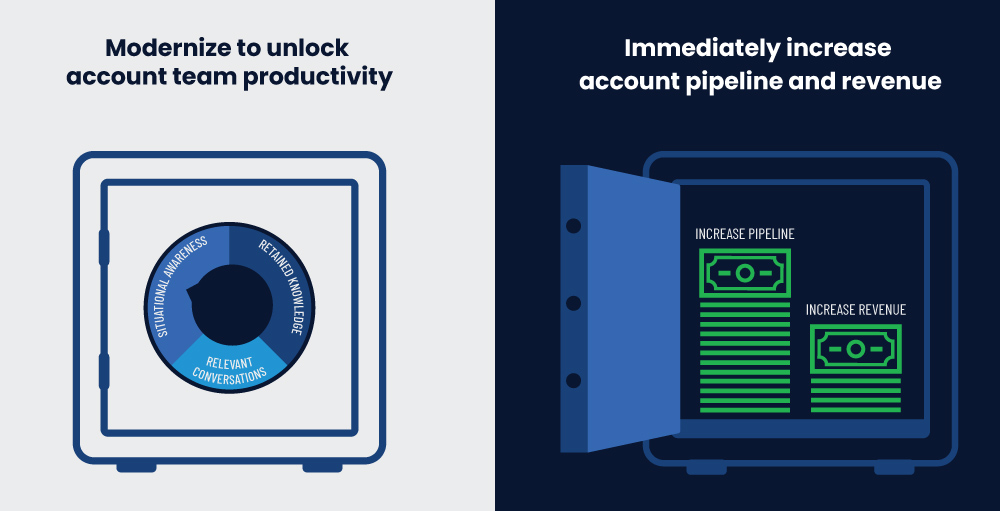Acquiring and retaining talent, upskilling, and reskilling are top of mind for business leaders in today’s turbulent environment. With the great resignation, remote workers becoming the norm, and the effect of a volatile global economic outlook, businesses are scrambling to react to these new challenges. Talent wars, onboarding velocity, increasing productivity in the face of budget cuts, all while achieving growth, retaining key customers, and managing investor expectations is a tall order. There is no end in sight to what lurks around the corner in today’s unpredictable business climate.
Executives must look for new ways to improve performance organically and find answers through a strategy of modernization – a highly effective way to unlock productivity and growth from within. There are valuable opportunities to modernize antiquated practices and functions to generate large gains in productivity and expansive growth systematically in the face of a recession. A modernization strategy can be broad and transformative, but also focused and phased for immediate near-term gains. Here are three areas that are ripe for modernization right now: improving situational awareness of key account needs, enabling more relevant sales conversations, and retaining tribal knowledge regarding pursuit history.
Overcoming Information Overload
Customer facing employees deal with a massive volume of external information across multiple sources every day, that they manually search, analyze, share, and activate internally in the form of new opportunities. And that’s if and when they have the time. Trapped inside this deluge of information is a constant flow of relevant opportunities for addressing top customer needs and priorities that result from all sorts of different business events.
There is an opportunity to streamline and automate the dissemination of this information so teams can spend their time having meaningful sales conversations vs. doing research. If just one team with five resources spends 5 hours a week researching external customer information, that amounts to 100 hours a month in back-office research time vs. in valuable sales conversations with customers about addressing their problems. Ten teams would spend 1,000 hours a month, 100 teams, 10,000 hours a month that could be recovered and repurposed.

Separately, there is the optimized use of that recovered time. What are the best opportunities to pursue in terms of alignment with customer needs? Where and with whom do addressing these opportunities lie and are there pre-existing relationships, or other points of leverage with regard to activating commercial conversations? And then there is the coordination of team attention and time to orchestrate the right conversations through shared actionable insights.
Overcoming Irrelevant Sales Conversations
When sales conversations do occur, is it time well spent or a wasted effort? Given how much preparation goes into customer meetings and the number of people involved in each one, imagine if those conversations were mostly productive vs. non-productive. In other words, did new opportunities result from each meeting given the alignment of potential value with customer needs or was the meeting spent presenting products that aren’t relevant to the customers’ needs and interests?
According to past research, customer executives consider about 11% of sales conversations to be valuable on average and typically rate the vendor’s knowledge about their business and their role specifically as poor. Not only does this lack of knowledge result in unproductive meetings at a high cost, but it detracts from future productive meeting opportunities. There is a big productivity gain in converting unproductive meetings to productive ones, where new opportunities are co-created with customers because productive meetings tie directly to pipeline development and revenue.
The next question is who are you having productive meetings with? According to Gartner’s Reinvent your Go-to-Market Strategy, February 2022, up to 20 different stakeholders are typically involved in making a buying decision. And relevant conversations with each one are critical. Without reaching all stakeholders involved, the chances of winning go down substantially as deals get stalled. Are relevant conversations being mapped and coordinated with all stakeholders around a particular key account initiative? Has a change agent at the customer been identified who will sponsor the effort? Are the interrelationships between the people involved and how they make decisions as a group understood?

If you have a team of 5 who has 10 sales meetings a month and each one takes 5 hours of prep, meeting time and follow up, and 80% of those meetings are unproductive, that amounts to 200 hours of unproductive meeting time with no results. 10 teams would be 2,000 hours per month. 100 teams would be 20,000 unproductive meeting hours per month. Imagine converting even half that time to productive meetings that created new pipeline and revenue.
Decentralized Pursuit History
When people leave, it’s very disruptive to an opportunity that is in flight. Sales cycles typically take 6-12 months or even longer given budget cycles, the size of the opportunity, the number of people involved, and the number of events and changes that can interrupt progress. When critical people leave an organization, that entire investment in an opportunity is often lost. Typically, the history, the situational context, the supporting communications, and assets are fragmented across many individual systems and email making it impossible to recover.
When you think about the cost of pursuing an opportunity involving dozens of meetings over months of time with many people, a company will have invested hundreds of thousands of dollars into a pursuit without having saved the tribal knowledge and history in a centralized place. And to make matters worse, if all that time invested results in no new revenue, it’s a high unrecoverable cost without any top line revenue to show for it.
Additionally getting new resources up to speed when key people leave — picking up where others left off when they have no knowledge of the opportunity’s history — is virtually impossible. Instead of being immediately productive, these resources must start all over or abandon what was in flight for a new opportunity they originate.

If you have a team of 5 where one new person spends 40 hours of unproductive onboarding time per month, then 10 teams would spend 400 hours per month and 100 teams would spend 4,000 hours per month in just onboarding new employees. Imagine converting this time to being immediately productive in the field with customers.

Modernize each of these areas by empowering your existing resources to achieve significant productivity gains right now. First empower teams to be situationally aware without having to do their own manual research. Second, empower teams to have more valuable sales conversations that are relevant to key account stakeholders through a constant stream of prioritized business opportunities versus product-oriented pitches. Finally empower teams to retain and share the tribal knowledge invested into every opportunity without having to look for lost information across internal systems. The compounding effect of repurposing unproductive time associated with each area will yield increased pipeline and revenue and protect your investment.
Additionally, more productive employees will stay longer and cultivate stronger customer relationships through a modernized approach to doing business. Modernization is an effective way to make everyone more productive and drive organic growth fast.
Dave Irwin
Founder + CEO of Polaris I/O
Dave has 30 years of experience in B2B as President, GM, CMO, and CSO. He is recognized as an AI, marketing, and sales enablement expert. He is also a growth leader with a strong history of innovation.






